Engine vacuum, an essential aspect of a smoothly running internal combustion engine, influences everything from fuel economy to the overall performance of your vehicle.
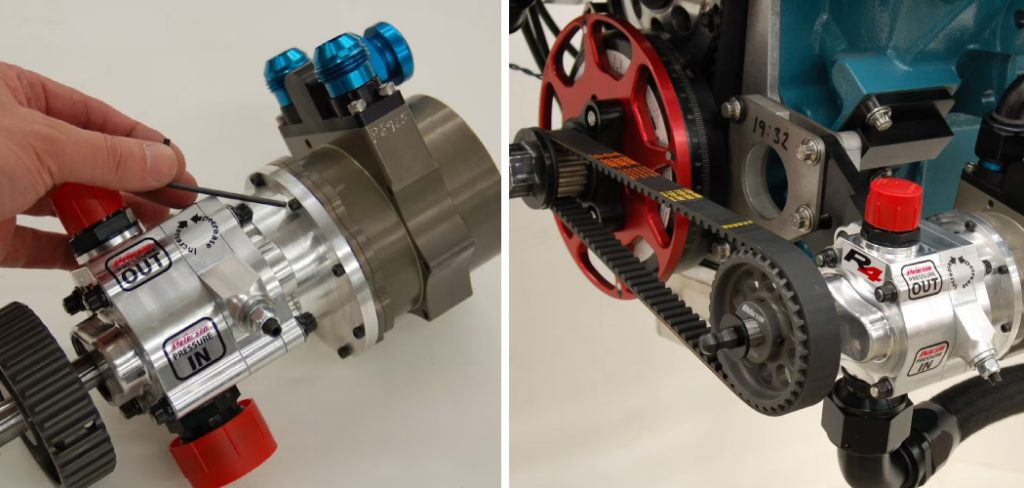
In this guide on how to increase engine vacuum, we delve into proven strategies for increasing engine vacuum, ensuring that your power plant operates at peak efficiency. We’ll cover methods ranging from basic maintenance practices to more advanced techniques, providing a comprehensive look at how to enhance your engine’s breathing capabilities for optimal output and longevity.
Explanation of Engine Vacuum as a Concept
Engine vacuum is the pressure difference between the inside of an engine’s intake manifold and the surrounding atmosphere. It is created by the downward movement of pistons during the intake stroke, which sucks air into the cylinders. This process creates a vacuum in the intake manifold, which helps pull in air and fuel for combustion.
The strength of this vacuum has a direct impact on the amount of air and fuel that enter the engine, ultimately determining how much power it can produce. A stronger vacuum results in better airflow and more efficient combustion, leading to improved performance.
Importance of Maintaining Proper Engine Vacuum
A strong engine vacuum is essential for a variety of reasons. Firstly, it ensures that your engine is receiving enough air and fuel to operate efficiently. Throttling or limiting air intake can cause the engine to run lean, which can result in decreased power output and potential damage to engine components.
In addition, proper engine vacuum is crucial for emissions control. A weak vacuum can lead to incomplete combustion, resulting in higher levels of harmful pollutants being emitted from your vehicle’s exhaust system. This not only has negative effects on the environment but can also lead to a failed emissions test and potential fines.
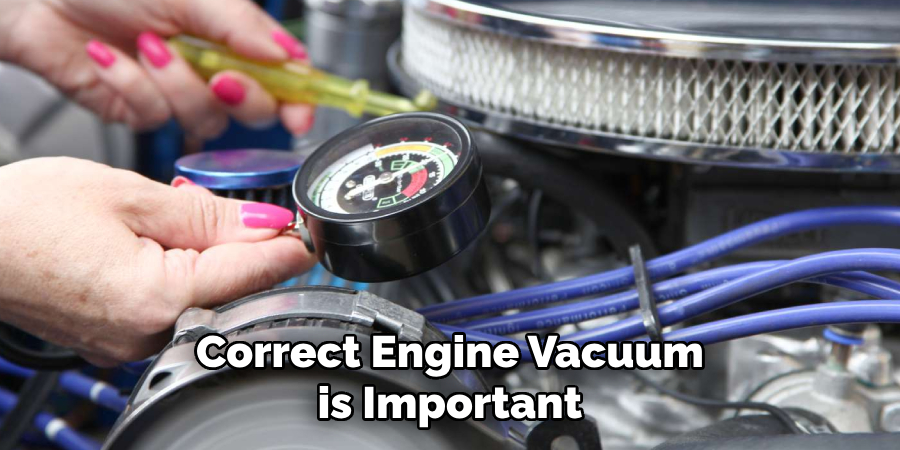
Additionally, maintaining the correct engine vacuum is important for fuel economy. A stronger vacuum means better combustion, leading to improved fuel efficiency and ultimately saving you money on gas.
Needed Materials: What You Will Need
Before we dive into the methods of increasing engine vacuum, it’s important to gather all the necessary materials first. These may include:
A Vacuum Gauge
This can be either a handheld tool or an electronic gauge mounted on your vehicle’s dash. It measures the engine’s vacuum pressure and allows you to monitor it during testing.
A Vacuum Pump
This is used to create a controlled vacuum in your engine’s intake system. You can purchase one specifically designed for automotive use or make one yourself using a hand-held pump and a gauge.
Replacement Vacuum Lines
over time, vacuum lines can become cracked, worn out, or disconnected, leading to leaks and decreased vacuum pressure. Having replacement lines on hand is important for troubleshooting potential issues.
A set of wrenches
will be necessary to remove and replace vacuum lines and other components.
Carburetor Cleaner
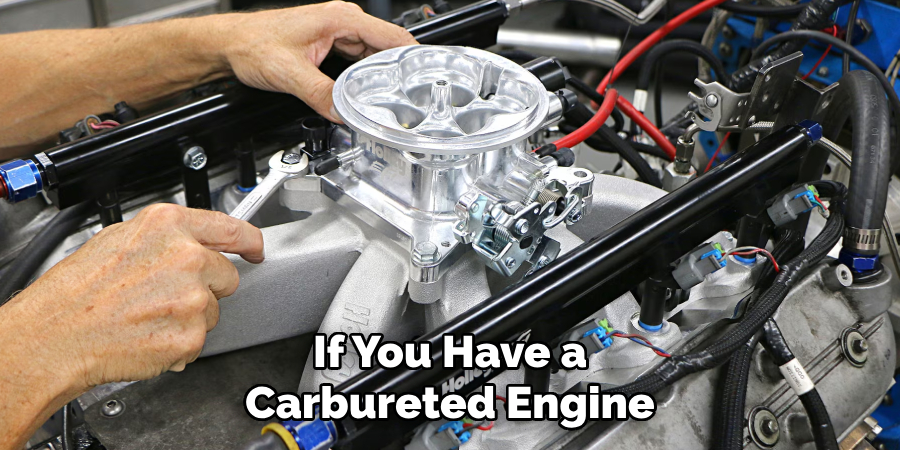
If you have a carbureted engine, this will be needed to clean the carburetor’s internal passages, which can become clogged and restrict airflow.
10 Step-by-step Instructions on How to Increase Engine Vacuum
Step 1: Inspect for Vacuum Leaks
Vacuum leaks can greatly impact the strength of your engine’s vacuum. Inspect all hoses, connections, and gaskets for any signs of damage or wear that could result in a leak. Replace any damaged components to ensure a tight seal.
You can also use a smoke machine to detect any hard-to-find leaks. But be careful not to use too much smoke, as it can damage your engine. The use of a vacuum gauge can also help pinpoint leaks.
Step 2: Clean or Replace Air Filter
A dirty air filter can restrict airflow into the engine, reducing vacuum strength. Make sure to clean or replace your air filter regularly according to the manufacturer’s recommendations. Otherwise, debris and dirt can build up and clog the filter, limiting the amount of air that enters the engine.
You can also upgrade to a high-flow air filter for improved airflow. It could potentially increase engine vacuum by a few inches. It is important to note that some high-performance air filters may require more frequent cleaning or replacement.
Step 3: Check and Replace Spark Plugs
Spark plugs play a significant role in maintaining proper engine vacuum. Worn or damaged spark plugs can result in incomplete combustion, leading to weaker vacuum strength.
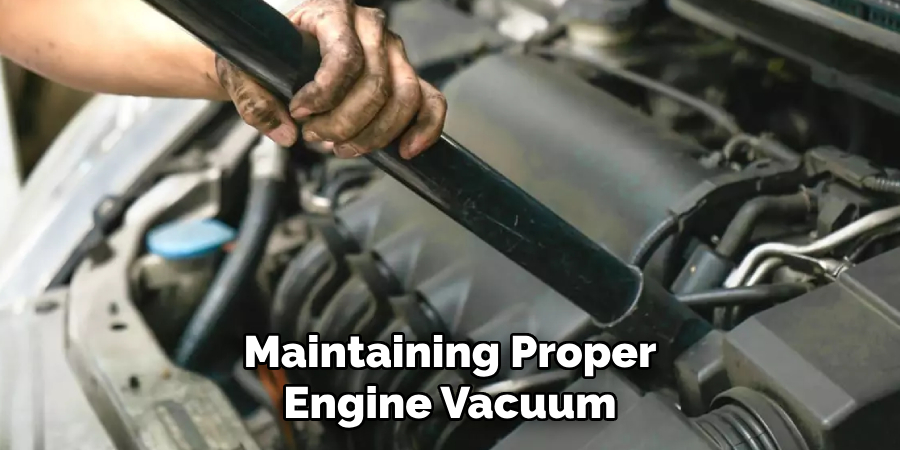
Make sure to regularly check and replace your spark plugs according to the manufacturer’s recommended intervals. Although it may seem like a small component, spark plugs have a big impact on engine performance.
Step 4: Inspect and Clean the PCV Valve
The Positive Crankcase Ventilation (PCV) valve regulates the flow of gases from the crankcase to the intake manifold. A clogged or malfunctioning PCV valve can result in decreased engine vacuum, as well as potential oil leaks and other issues. Regularly inspect and clean your PCV valve to ensure it is functioning properly.
The valve should be replaced every 30,000 miles. It’s a small and inexpensive part, but it plays a big role in maintaining engine vacuum. You can also upgrade to a high-performance PCV valve for improved airflow.
Step 5: Check and Adjust Timing
Proper ignition timing is crucial for a strong engine vacuum. If the timing is off, the air and fuel mixture may not ignite at the correct time, resulting in inefficient combustion and weak vacuum.
Use a timing light to check and adjust your ignition timing as needed according to the manufacturer’s recommendations. The process may vary depending on your specific vehicle, so consult a manual or seek professional help if needed.
Step 6: Upgrade to High-Performance Throttle Body
The throttle body is responsible for regulating the airflow into the engine. Upgrading to a high-performance throttle body can result in increased airflow and improved vacuum strength. Make sure to choose a throttle body that is compatible with your vehicle’s engine and intake manifold.
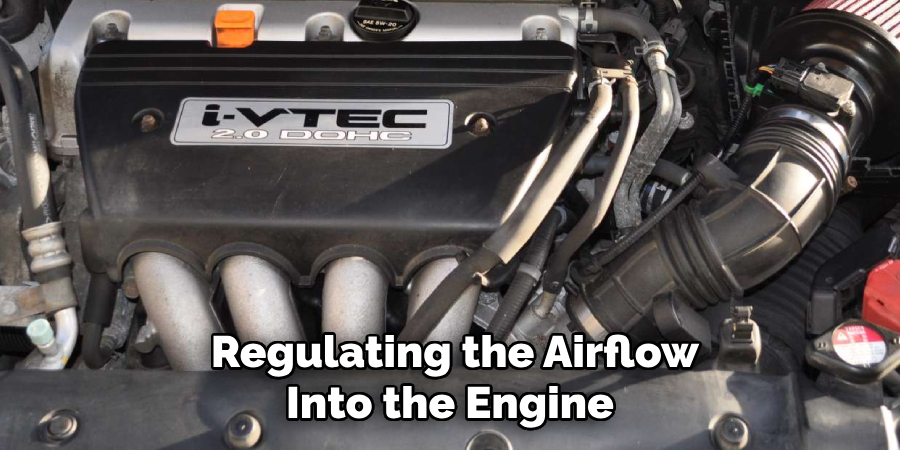
Otherwise, it may not fit or function properly. It’s important to research and consult with experts when upgrading any engine component. You can also opt for a larger throttle body if you have made other performance modifications to your engine.
Step 7: Install Cold Air Intake
A cold air intake can also improve airflow into the engine, resulting in a stronger vacuum. This type of intake system brings cool, dense air from outside the engine compartment directly to the engine for combustion. Make sure to choose a cold air intake that is designed specifically for your vehicle’s make and model.
An improperly installed or incompatible intake can result in decreased performance. The installation process may also vary depending on your specific vehicle, so consult a manual or seek professional help if needed.
Step 8: Use High-Performance Ignition Coils
Upgrading to high-performance ignition coils can also help improve engine vacuum by providing a stronger spark for better combustion. The stronger the spark, the more efficient the combustion process will be, resulting in improved vacuum strength.
Make sure to choose coils that are compatible with your vehicle’s engine and ignition system. Otherwise, they may not fit or function properly. It’s important to research and consult with experts when upgrading any engine component.
Step 9: Install Aftermarket Exhaust System
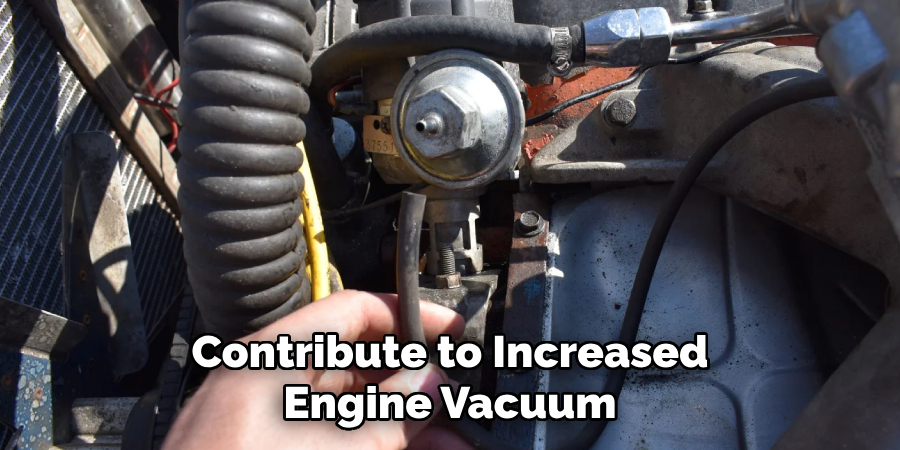
A well-designed aftermarket exhaust system can also contribute to increased engine vacuum. A free-flowing exhaust allows for better airflow and reduced back pressure, resulting in improved performance and a stronger vacuum.
Make sure to choose an exhaust system that is specifically designed for your vehicle’s make and model. An improperly installed or incompatible exhaust system can actually decrease performance instead of improving it.
Step 10: Tune the Engine with Performance Chips or Programmers
Tuning your engine with performance chips or programmers can also help increase vacuum strength. These devices allow you to adjust various engine parameters, such as fuel-to-air ratio and ignition timing, for optimal performance. Make sure to choose a chip or programmer that is compatible with your vehicle’s make and model.
It’s important to research and consult with experts when tuning your engine, as improper adjustments can lead to engine damage. Overall, maintaining and improving engine vacuum is crucial for optimal engine performance.
By regularly inspecting and replacing components, upgrading to high-performance parts, and properly tuning the engine, you can ensure that your vehicle runs at its best. Remember to always consult a manual or seek professional help if needed when making any modifications to your engine. With these steps, you can improve vacuum strength and enjoy a smoother and more powerful driving experience.
Advanced Techniques for Increasing Engine Vacuum
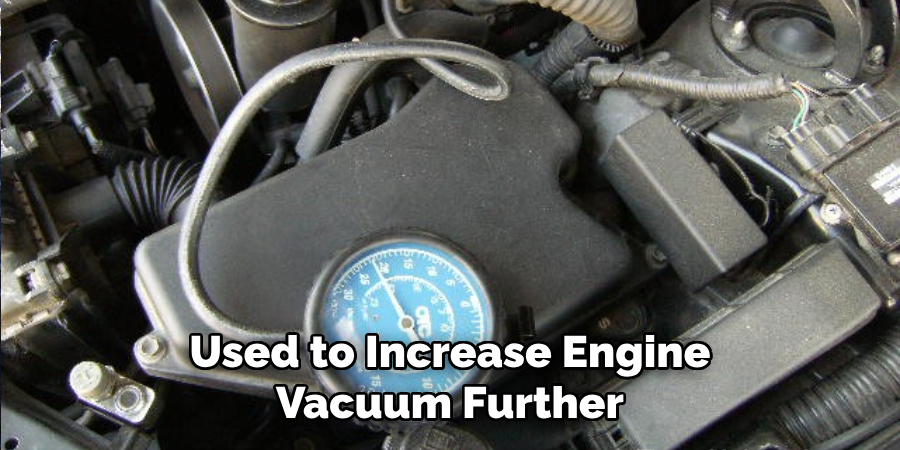
Aside from the basic steps mentioned above, there are also more advanced techniques that can be used to increase engine vacuum further. These methods may require more technical knowledge and expertise, so it’s important to thoroughly research and consult with experts before attempting them.
Porting and Polishing
Porting and polishing involve reshaping and smoothing out the internal surfaces of the intake manifold, cylinder heads, and exhaust ports. This can improve airflow into the engine, resulting in increased vacuum strength. Proper techniques must be used to avoid damaging the components or creating uneven surfaces that can actually decrease performance.
High-Lift Camshafts
Installing high-lift camshafts can also help increase engine vacuum by allowing for more air and fuel to enter the combustion chamber. However, this modification may also require upgrades to other components such as valve springs and lifters, so it’s important to consult with experts before attempting it.
Forced Induction
Forced induction involves using a supercharger or turbocharger to force more air into the engine, resulting in increased vacuum strength. This method can provide significant power gains but may require additional modifications and careful tuning to avoid engine damage.
Nitrous Oxide Injection
Nitrous oxide injection involves introducing an oxygen-rich gas into the engine’s combustion chamber, resulting in a more powerful explosion and increased vacuum strength. However, this method can also be dangerous if not properly used, so it’s important to consult with experts and follow safety precautions.
By utilizing these advanced techniques on how to increase engine vacuum, you can achieve even better performance and power from your vehicle. However, always remember to thoroughly research and consult with experts before attempting any modifications on your engine to avoid potential damage or risks.
With the right knowledge and techniques, you can improve your engine vacuum and enjoy a smoother and more efficient driving experience.
Do You Need to Use Professionals?
While many of these modifications can be done on your own with the right tools and knowledge, it’s always recommended to consult with professionals when making any significant changes to your engine. This is especially important for advanced techniques such as porting and polishing or forced induction, which require precise calculations and specialized equipment.
Professionals have the expertise and experience to ensure that these modifications are done correctly and safely, resulting in optimal performance from your vehicle. So don’t hesitate to seek professional help if needed. Your engine will thank you for it!
How Much Could It Cost?
The cost of increasing engine vacuum will vary depending on the specific modifications you choose and whether you do it yourself or seek professional help. Basic steps such as regular maintenance and replacing worn components may only require the cost of parts, while more advanced techniques and upgrades can cost hundreds or even thousands of dollars.
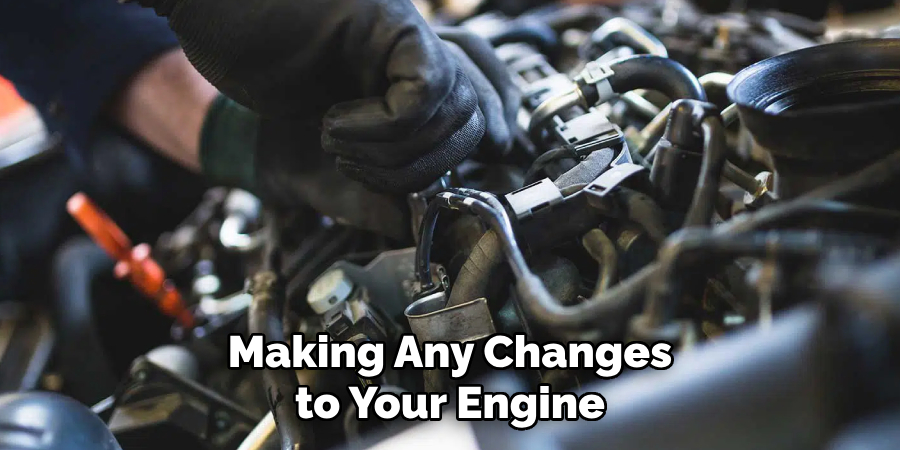
It’s important to set a budget and research prices before making any changes to your engine. Remember, safety and quality should always take priority over cost when it comes to modifying your vehicle’s engine.
Overall, investing in ways to increase engine vacuum can greatly improve the performance and longevity of your vehicle’s engine, making it a worthwhile investment for any car enthusiast or owner looking for a smoother and more powerful driving experience. With the right steps and techniques,
Troubleshooting Common Issues with Increasing Engine Vacuum
While increasing engine vacuum can greatly improve performance, there are also some common issues that may arise during the process. Here are a few troubleshooting tips to help you address these problems:
Decreased Performance:
If you notice a decrease in overall engine performance after making modifications to increase vacuum strength, it’s possible that one of the components is not functioning properly or is incompatible with your vehicle. Double-check the installation and compatibility of each part, and seek professional help if needed.
Check Engine Light:
If your check engine light comes on after making modifications, it’s important to address the issue immediately. A diagnostic scan may reveal that one of the components is not functioning properly or may have caused damage to other parts. Consult with experts to determine the cause and find a solution.
Engine Misfire:
An engine misfire can occur if the spark plugs, ignition coils, or fuel injectors are not functioning properly. Make sure to regularly inspect and replace these components if needed to ensure proper combustion and strong vacuum strength.
Frequently Asked Questions
Q: Can I Increase Engine Vacuum Without Making Any Modifications?
A: Yes, regular maintenance and inspections of the engine components can also help improve vacuum strength. You can also upgrade to high-performance parts for better airflow and reduced back pressure.
Q: How Often Should I Inspect and Replace Engine Components?
A: It’s recommended to follow the manufacturer’s guidelines for maintenance and replacement intervals. However, it’s also important to regularly check for signs of wear and tear and address any issues immediately.
Q: Can I Increase Vacuum Strength Without Professional Help?
A: While basic maintenance and upgrades can be done by yourself, more advanced techniques such as porting and polishing should be done by professionals to avoid potential damage. It’s always best to consult with experts for any modifications to your engine.
Q: Will Increasing Engine Vacuum Void My Warranty?
A: It’s important to check with your vehicle manufacturer and read the terms of your warranty before making any modifications. Some warranties may be voided if modifications are made, while others may have no restrictions. Always proceed with caution and follow proper procedures to avoid potential issues with your warranty.
Q: How Much of an Increase in Performance Can I Expect From Increasing Engine Vacuum?
A: The amount of performance gain will vary depending on the specific modifications made and the condition of your vehicle. It’s best to consult with experts and conduct before-and-after tests to determine the exact impact on your vehicle’s performance.
Overall, properly increasing engine vacuum can result in noticeable improvements in engine power and efficiency. So, it’s worth considering if you want to take your vehicle’s performance to the next level.
With careful research, proper techniques, and regular maintenance, you can successfully increase engine vacuum and enjoy a smoother and more powerful driving experience. So, don’t hesitate to explore these advanced techniques and consult with experts for optimal results. Happy driving!
Conclusion
To maximize your engine’s performance and extend its lifespan, maintaining and improving engine vacuum is non-negotiable. By adhering to regular maintenance, addressing leaks promptly, and considering upgrades such as a high-flow exhaust system or performance camshaft, you ensure that your engine breathes efficiently.
Always remember that a high vacuum level is synonymous with a healthy and robust engine, translating to improved fuel efficiency and a more responsive throttle. Whether you are an experienced mechanic or an enthusiastic DIYer, applying the strategies outlined in this guide on how to increase engine vacuum will elevate your vehicle’s engine vacuum and, consequently, its overall performance.

About
JeepFixes Team is a skilled author for Jeep Fixes, bringing 6 years of expertise in crafting a wide range of jeep fixes. With a strong background in jeep fixes work, JeepFixes Team’s knowledge spans various types of fixtures, from decorative pieces to functional hardware, blending precision with creativity. His passion for jeep fixes and design has made him a trusted resource in the industry.
Professional Focus:
Expert in Jeep Fixes : JeepFixes Team aesthetic specializes in creating durable and innovative jeep fixes, offering both appeal and functionality. His work reflects a deep understanding of jeep fixes techniques and materials.
Sustainability Advocate : He is dedicated to using sustainable practices, ensuring that every fixture is crafted with eco-friendly methods while maintaining high-quality standards.
In his writing for jeep fixes, JeepFixes Team provides valuable insights into the latest trends, techniques, and practical advice for those passionate about jeep fixes, whether they are professionals or DIY enthusiasts. His focus on combining artistry with engineering helps others discover the true potential of jeep in design.
